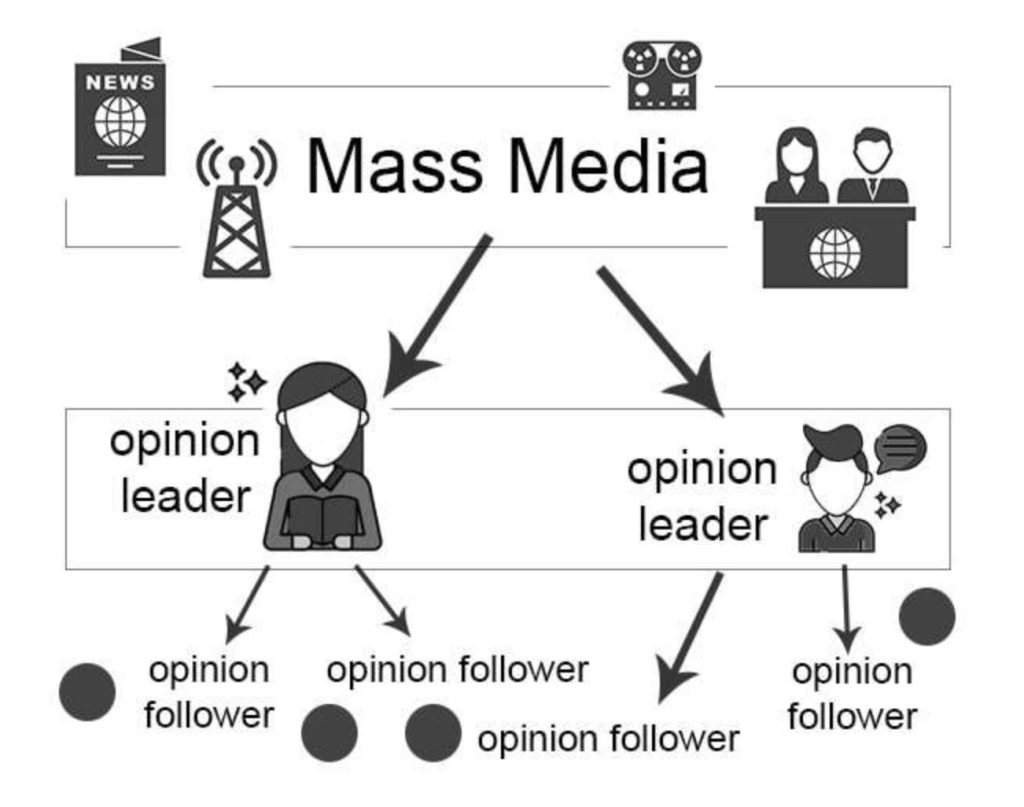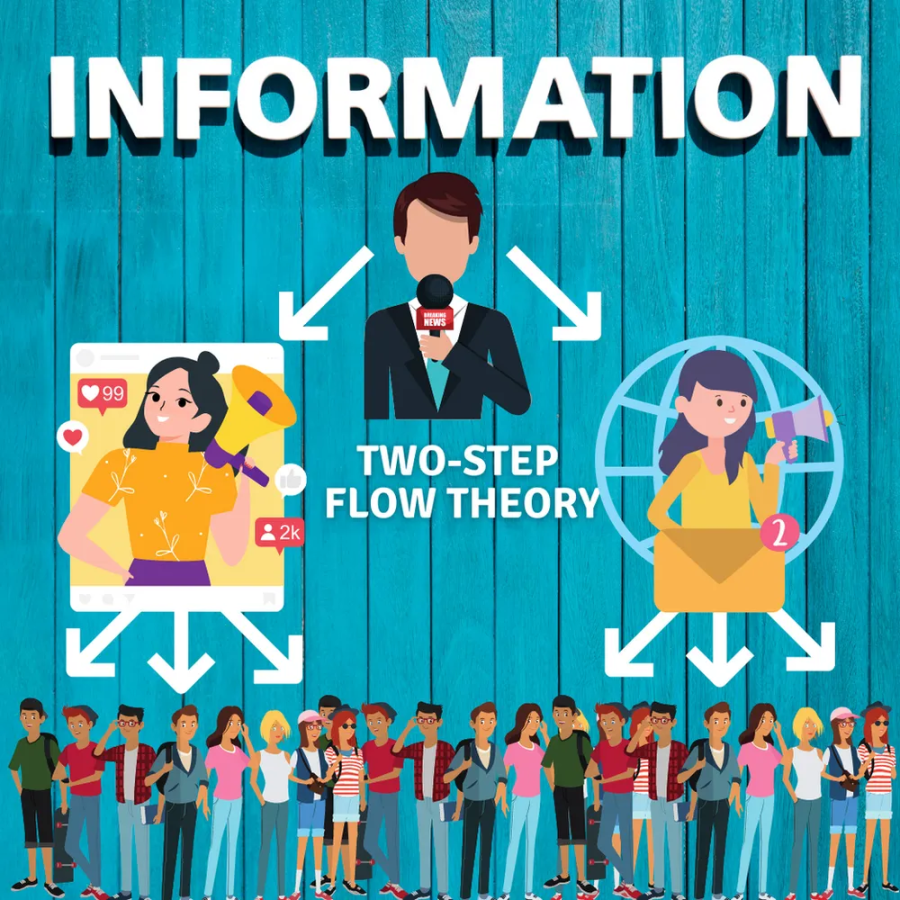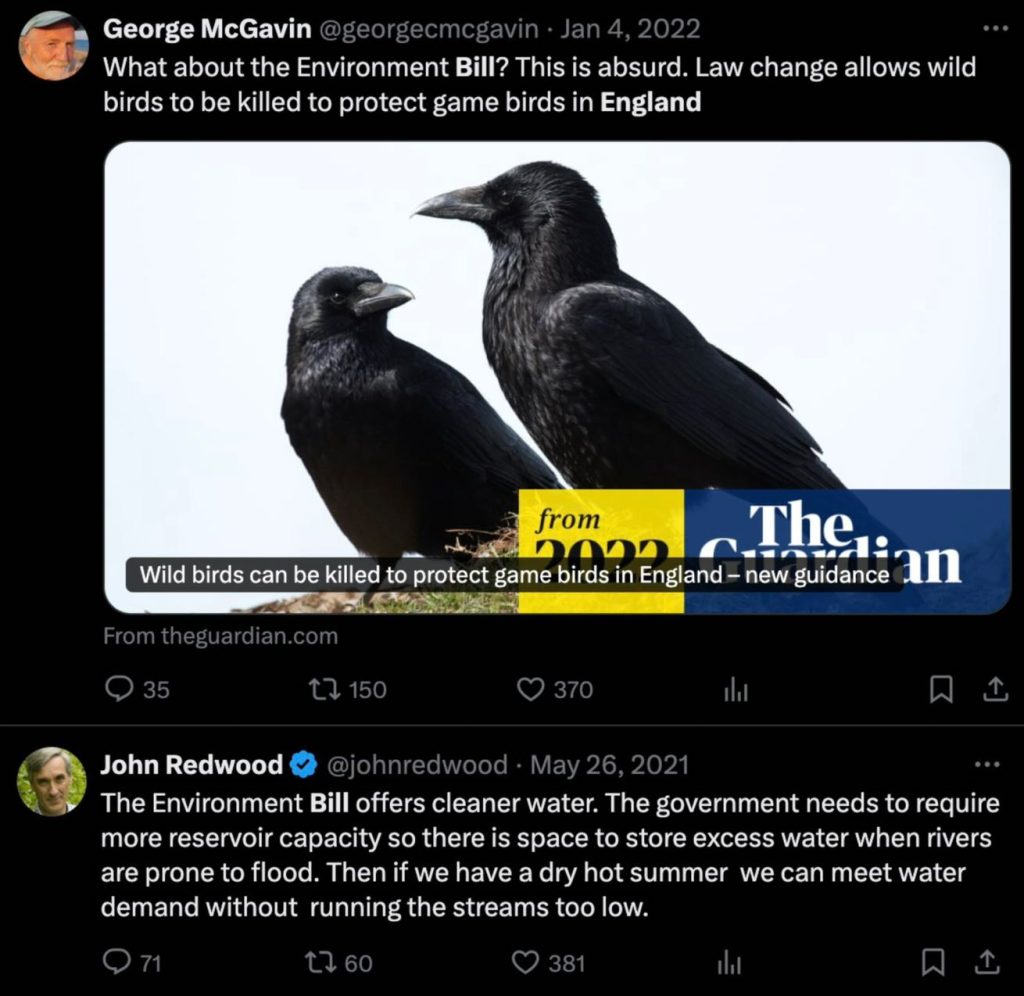Concept

- The integration of interpersonal influence and media effect is intended to show that interpersonal communication is more effective than mass communication and that the influence of interpersonal networks is greater than the role of media channels in the flow of information (Katz, 1957).
(source: Media Studies)
The American presidential election of 1940 was an important turning point in the history of communication. Lazarsfield and Katz found that some voters’ political preferences were changed more by persuasion from friends and family than by mass media.
This study reveals a two-step flow of communication phenomenon: from mass media to audience, information goes through two stages, first from mass communication to opinion leaders, and then to the public. (Wikipedia,2024).
Further Explanation
In today’s popular social media network era, the official number, big V, net celebrity, up master, MCN marketing number, and even information receivers and disseminators in small groups have assumed this part of the function.
To better understand the Two-Step Flow Theory, I cited as an example the phenomenon of the UK Department for Environment, Food and Rural Affairs producing a two-step flow of communication when the Environment Bill was posted on the social media platform Twitter.
The new environmental policy, announced by the government on Twitter, will improve air and water quality and tackle environmental problems such as plastic pollution. In this scenario, the government plays the role of the primary communicator.
- Primary communication: The government publishes the Environment Act Tweet to communicate the policy message to its followers, including the public, environmental groups, industry leaders and the news media, and the tweet directly communicates the core content of the policy.
- Two-step communication: As the government released information, users on Twitter began interacting, commenting, sharing and replying. These intermediaries may be environmental activists, scientists, and industry experts. They disseminate information about government policies to their followers.
It follows that intermediaries are here not only to disseminate information, their opinions and comments may influence followers’ perceptions and attitudes towards policy.
Conclusion
However, because the Two-Step Flow Theory was mainly formed in the era of print and broadcast television, it is somewhat outdated in the era of networks (Soffer, 2021). First of all, information sources are no longer limited to public media, and people have more diversified channels to obtain information. Secondly, the boundary between opinion leaders and audiences is blurred. Bloggers and scholars on the Internet are more commentators than simple information transmitters, and they may have preconceived ideas.
So when I share videos of opinion leaders or other news sources, I make sure that what I share or talk about is true and not false information.
References:
- Image: https://media-studies.com/two-step-flow/
- (Katz E. (1957). The two-step flow of communication: An up-to-date report on an hypothesis. Public Opinion Quarterly, 21, 61–78)
- Image: https://x.com/georgecmcgavin/status/1478277590322458626?s=46
- Image: https://x.com/johnredwood/status/1397609105859223558?s=46
- Soffer, O., 2021. Algorithmic personalization and the two-step flow of communication. Communication Theory, 31(3), pp.297-315.



Interesting!Deeply thinking!
Thank you~
There are deep themes. But whether the information released by opinion leaders can influence the minds of the audience?